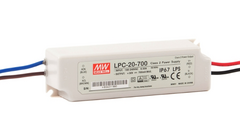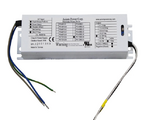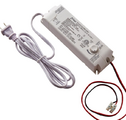How to Troubleshoot Common LED Power Supply Issues?
Troubleshooting issues with your LED power supply can be straightforward if you know what signs to look for and how to address them. This guide delves into common problems, offering step-by-step solutions to keep your LED lighting system functioning optimally.
No Power or Intermittent Operation
If your LEDs fail to light up or flicker, start by checking the power connection. Ensure that the power supply is properly plugged in and that the outlet is functioning. Use a voltmeter to verify that the output voltage matches the specifications required by your LEDs. A deviation in voltage could indicate a faulty power supply or an issue with the electrical input.
Excessive Heat from the Power Supply
An overheating power supply is a red flag. First, ensure that the power supply is not overloaded. Overloading occurs when the connected LED load exceeds the wattage rating of the power supply. For example, if your power supply is rated for 50 watts and you're running LEDs that collectively draw 60 watts, this can cause significant heat buildup and potentially damage the unit. Reduce the load or upgrade to a higher wattage power supply.
Flickering or Unstable LED Output
Flickering may result from an unstable or insufficient power supply. Check if the current (amperage) provided by the power supply matches the needs of your LED setup. If your LEDs require 3 amps and your power supply outputs only 2.5 amps, this mismatch can cause flickering. Consider replacing the power supply with one that can handle a higher current.

Premature Burnout of LEDs
If LEDs connected to your power supply are burning out sooner than their expected lifespan, this might be due to incorrect voltage or current settings. Verify that the voltage and current specifications of your LED Power Supply align with those of your LEDs. Using a power supply with adjustable output settings can help fine-tune the voltage and current to suit your specific LED configuration.
Humming or Buzzing Sounds
A humming or buzzing sound from the power supply often indicates electrical interference or a malfunction within the unit. This could be related to the quality of the components used in the power supply or issues like loose screws or a failing electrical capacitor. Inspect the power supply for any visible signs of damage or loose components. Tightening screws and replacing worn parts can often resolve this issue.
Troubleshooting Tips:
- Always disconnect power before attempting any repairs to avoid electrical hazards.
- Use a multimeter to check for proper voltage and current output.
- Ensure that all connections are secure and free from corrosion or damage.
- Consult the manufacturer's documentation for specific troubleshooting guidance related to your power supply model.
By familiarizing yourself with these common issues and solutions, you can effectively troubleshoot and maintain your LED power supply, ensuring efficient and reliable operation of your LED lighting systems. Remember, keeping an eye on the performance and taking timely action can significantly extend the life of your LED setup.





